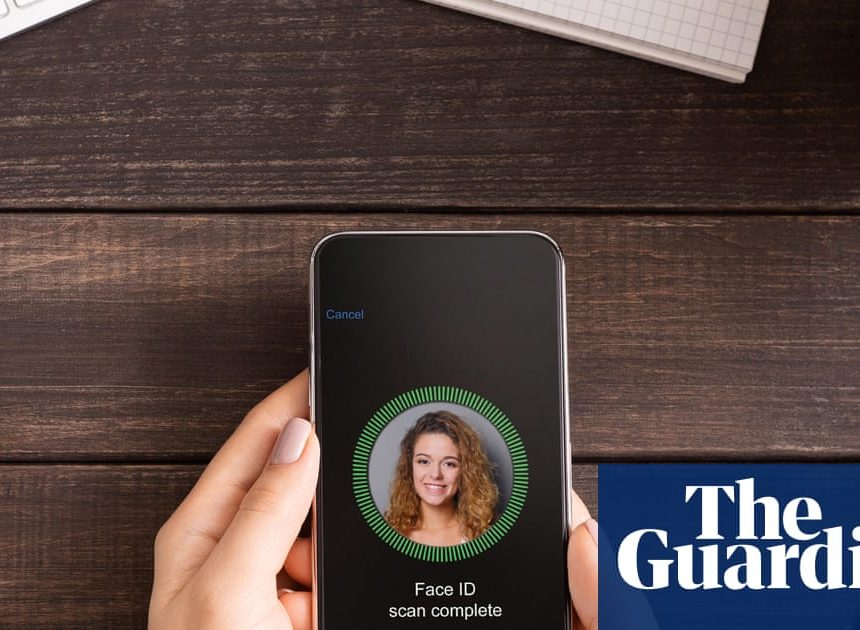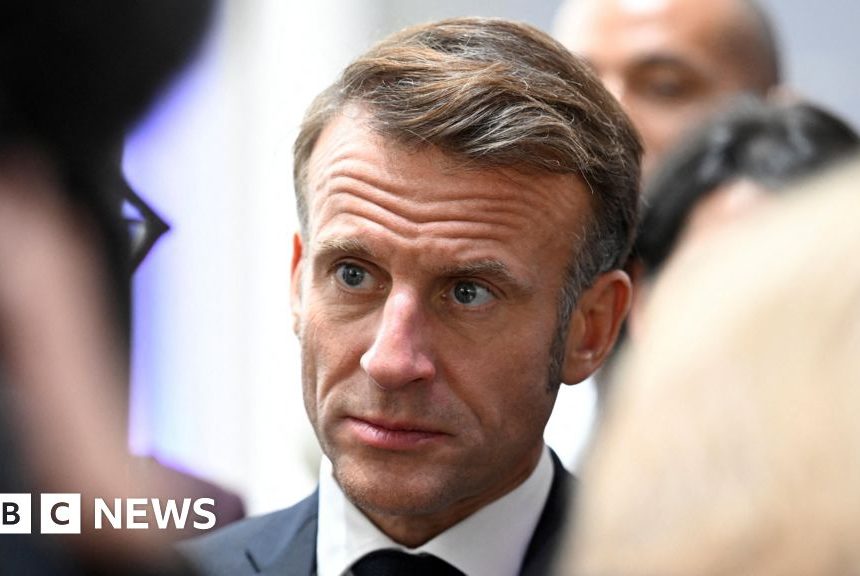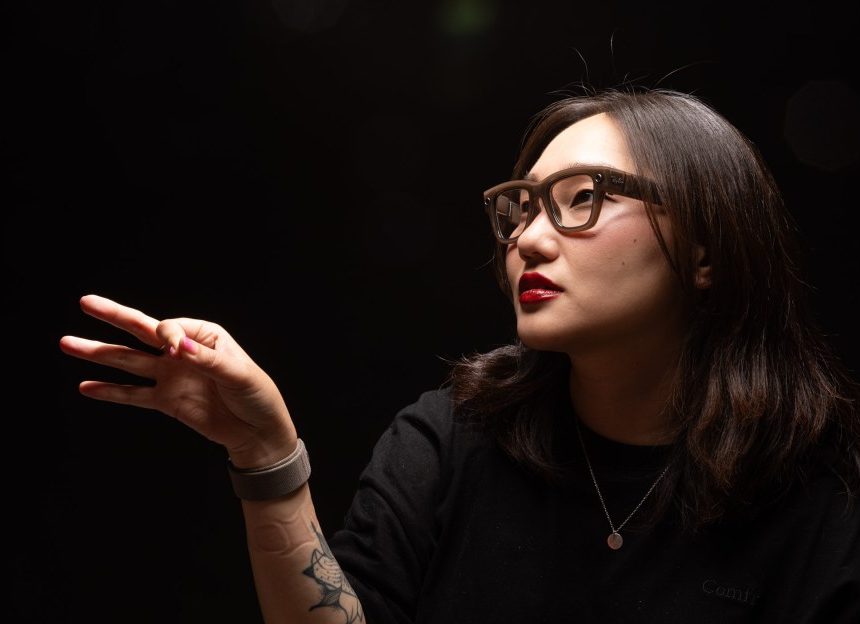David CannBusiness reporter
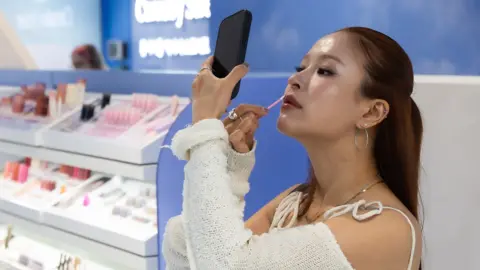 PureSeoul
PureSeoulKorean skincare or “K-beauty” products are very popular around the world.
But as exports from South Korea hit $10.3bn (£7.7bn) last year, cosmetics companies in other countries have introduced their own K-beauty ranges that are not Korean-made.
Does this blurring of the definition matter?
K-beauty products first came to international attention in the 2010s, part of a wave of other Korean exports, such as K-pop and K-drama.
The K-beauty skincare regime can be very elaborate, involving as many as 10 different steps, each requiring a separate product. This caught the imagination of people around the world, and sales rose sharply.
Annual exports from South Korea increased from $650m in 2011 to $4bn in 2017, according to official figures, a sixfold rise in just six years.
Recognising this huge jump in demand, cosmetics brand Seoul Ceuticals was launched in 2017, named after the South Korean capital.
“We started to see this increase in growth in interest in K-beauty, and began developing a skincare brand to meet that demand… when we really saw it emerging in the US,” says Seoul Ceuticals’ director of retail relationship Ann Majeski.
“It has been extremely successful. We expect to do over $14m in sales in 2025. We’ve seen a global acceptance and demand for the K-beauty products. We’ve started selling in India, Latin America, Europe and Australia.”
But Seoul Ceuticals is not a Korean company. It is based in the US, where it also manufacturers all its products.
The business doesn’t claim to be Korean, but it does say that it makes “real, authentic Korean skincare”.
That may sound like a contradiction, but the company says it isn’t because its ingredients are sourced from South Korea.
“I think we were a little more sensitive about it when we were first starting, because we wanted to be very transparent that the products are made in the US,” says Ms Majeski.
“[But] we source our ingredients in Korea… we wanted to be able to legitimately say we are a K-beauty brand.”
But not everyone would agree with this.
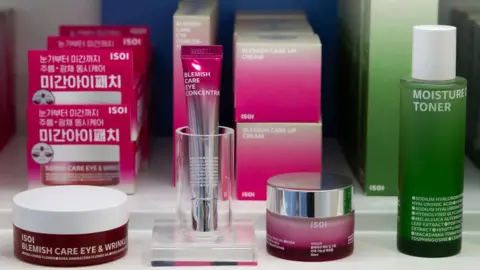 PureSeoul
PureSeoul“The products should be manufactured by a Korean manufacturer,” says Seung Gu Kim, co-founder of K-beauty cosmetics firm Hwarangpoom.
He runs the business with his wife Elisa Ahonpää-Kim. While they are based in Finland, all of their team except Elisa are Korean, and all their products are made in South Korea.
“The most important thing that we both absolutely agree is that the brand should develop its concept, and ideas, and products with a Korean perspective,” says Mr Kim.
“That can come through in the ingredients, the design. Or cultural elements, basically anything that clearly connects to the brands to Korea, or at least reflects a Korean influence.”
However, the couple do admit that the definition of K-beauty remains complex.
“I guess it’s a very vague concept, because on the market you will find a lot of brands that are made by Koreans who live abroad,” says Ms Ahonpää-Kim.
“And then brands like Lancôme and Clinique manufacture their products in Korea and Japan, but then it doesn’t make those brands Japanese and Korean.”
There is currently no official definition of K-beauty. And there is no protected designation of origin to defend it, like in the case of Champagne or Parmigiano Reggiano cheese.
And there is no plan to set one up, according to the K-beauty Industry Association, the only K-beauty trade body officially approved by the South Korean government.
“We are currently more focused in promoting and expanding K-beauty,” says the organisation’s chairman Chang Nam Jang.
“While the trend is quite established in Asia, it is only just starting in Europe and the US, and we don’t want to throttle the growth by imposing any sanctions on them.”
However, the association does have rules for its members – they must be companies that are registered in South Korea, and their products must be officially tested and approved by Korea Food & Drug Administration. That approval is required in order to sell inside South Korea.
“If a product is developed in a way that suits the climate and environment of Korea, and is recognized as a viable product in the Korean market, then we would acknowledge it as K-beauty,” says Mr Jang.
Hwarangpoom agrees with this definition, and has received approval from KFDA. And Seoul Ceuticals has also started the process to attain KFDA approval, to bring their products to Korean consumers.
With K-beauty exports from South Korea in 2024 20% higher than in 2023, there is a lot of money to be made in the sector whether the firms are homegrown or not.
In fact, South Korea is now the largest exporter of cosmetic products after France and the US.
However, this success has spawned counterfeiters.
Mark Lee is the CEO of MarqVision, a US-based business helps firms spot fakes and get them removed from sale.
“For a major Korean beauty brand, which I cannot disclose, we recently conducted 29 test purchases across major US marketplaces,” he says. “Twenty six of them were fake. So that’s a 90% counterfeit rate.”
And in 2024 as a whole, Marqvision identified $280m worth of fake K-beauty products in the US market alone.
The high number of counterfeits greatly frustrated K-beauty fan Gracie Tullio. “Shopping online for K-beauty was a really scary experience,” she says.
 PureSeoul
PureSeoulThis led to London-based Ms Tullio launching PureSeoul in 2019, a K-beauty retail business that sells authentic products sourced directly from Korean manufacturers.
She says she gets customers who visit the shop with suspected fake products to check if they are real.
“Even our customers can be sometimes tempted by the lower price [of online fakes]. It’s so tempting for them just to give it a go and see, and nine times out of 10, it’s not real,” she says.

